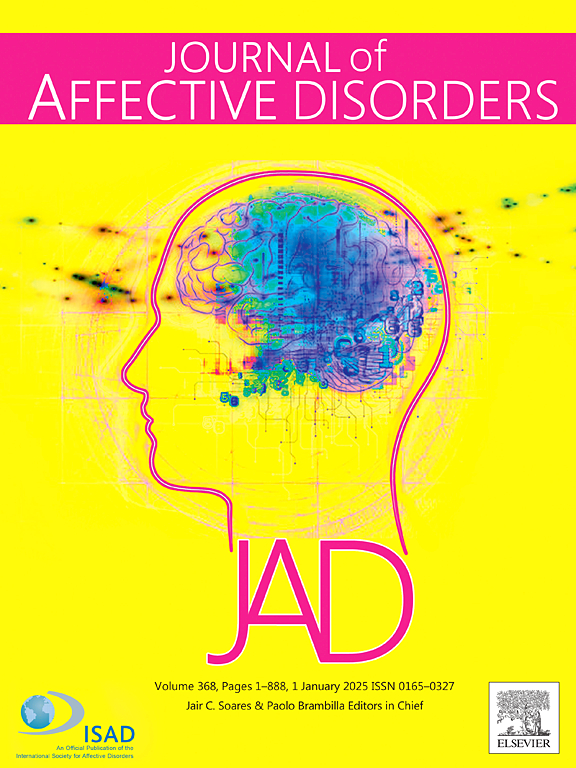A multicentric study examining a deep-learning-based computer model for classifying bipolar disorder using retinal vascular images
IF 4.9
2区 医学
Q1 CLINICAL NEUROLOGY
引用次数: 0
Abstract
Objectives
Due to easy accessibility, the retina is considered a window to the brain. Recent studies have reported retinal vascular abnormalities in bipolar disorder. Deep learning analysis, an advanced computational approach, has been implemented in medicine for diagnosis using retinal vascular images. However, deep learning analysis has not been implemented to classify patients with bipolar disorder and healthy individuals using retinal vascular images to date.
Methods
A total of 383 subjects participated in the study (188 patients with Bipolar Disorder (BD) and 195 Healthy Volunteers(HV)). 327 subjects were classified as the training dataset, and the remaining 56 subjects were classified as the test dataset. We acquired retinal fundus images using a non-mydriatic fundus camera. We applied an optimized convolutional neural network (CNN) model for the current analysis. The model was trained using the training dataset and its transfer learning ability was tested in the test dataset.
Results
The overall metrics of the CNN for the training dataset are 88.0 % sensitivity, 85.7 % specificity, 96.2 % positive predictive value, and 83.7 % negative predictive value. The model parameters were close to each other, suggesting a balanced model. The model achieved high performance in the test dataset; accuracy = 85.7 %, sensitivity = 83.3 %; specificity = 92.9 %, and positive predictive value = 83.3 %.
Conclusions
Diagnostic markers are the need of the hour in psychiatry. The CNN model differentiated BD patients and HV with greater accuracy. Replicating the findings in a non-overlapping, independent, test dataset suggests the potential for transfer learning and clinical utility.
一项多中心研究检查了基于深度学习的计算机模型,用于使用视网膜血管图像对双相情感障碍进行分类
由于易于接近,视网膜被认为是通往大脑的窗口。最近的研究报道了双相情感障碍的视网膜血管异常。深度学习分析是一种先进的计算方法,已在医学上用于使用视网膜血管图像进行诊断。然而,迄今为止,深度学习分析尚未应用于使用视网膜血管图像对双相情感障碍患者和健康个体进行分类。方法共纳入383名受试者,其中双相情感障碍(BD)患者188名,健康志愿者(HV) 195名。327个受试者被分类为训练数据集,其余56个受试者被分类为测试数据集。我们使用无散瞳眼底相机获得视网膜眼底图像。我们采用优化的卷积神经网络(CNN)模型进行当前分析。利用训练数据集对模型进行训练,并在训练数据集中测试模型的迁移学习能力。结果CNN对训练数据集的总体指标灵敏度为88.0%,特异性为85.7%,阳性预测值为96.2%,阴性预测值为83.7%。模型参数相互接近,表明模型是平衡的。该模型在测试数据集中取得了较好的性能;准确度= 85.7%,灵敏度= 83.3%;特异性= 92.9%,阳性预测值= 83.3%。结论精神病学诊断标志物是当前的需要。CNN模型对BD患者和HV患者的区分准确率更高。在一个非重叠的、独立的测试数据集中复制这些发现表明了迁移学习和临床应用的潜力。
本文章由计算机程序翻译,如有差异,请以英文原文为准。
求助全文
约1分钟内获得全文
求助全文
来源期刊

Journal of affective disorders
医学-精神病学
CiteScore
10.90
自引率
6.10%
发文量
1319
审稿时长
9.3 weeks
期刊介绍:
The Journal of Affective Disorders publishes papers concerned with affective disorders in the widest sense: depression, mania, mood spectrum, emotions and personality, anxiety and stress. It is interdisciplinary and aims to bring together different approaches for a diverse readership. Top quality papers will be accepted dealing with any aspect of affective disorders, including neuroimaging, cognitive neurosciences, genetics, molecular biology, experimental and clinical neurosciences, pharmacology, neuroimmunoendocrinology, intervention and treatment trials.
 求助内容:
求助内容: 应助结果提醒方式:
应助结果提醒方式:


